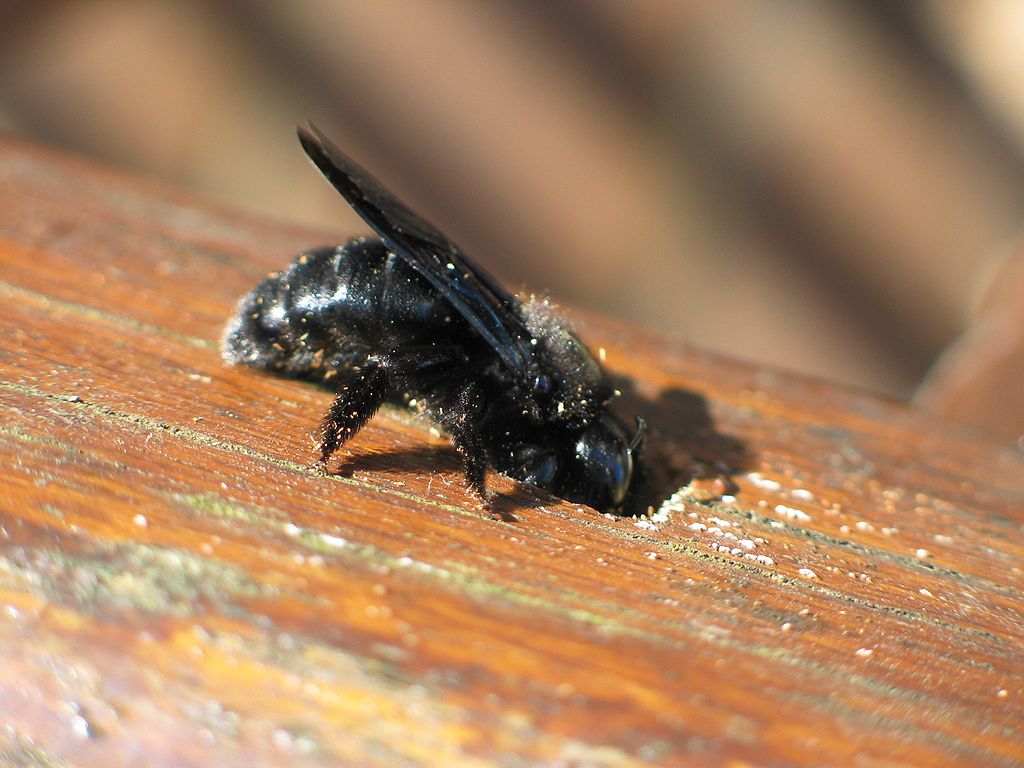Why Carpenter Bee Sprays Don’t Work
Imagine this...
It’s a perfect summer afternoon and all you want to do is sit outside and enjoy the beautiful weather. As you relax into your cushioned lawn furniture, you suddenly hear buzzing.
buzzzzz. buzzzzzz. buzzzzzzz.
You try to ignore it, but the bugger is persistent. Soon one swat turns into a full-fledged hunt to eliminate the annoying pest -- a carpenter bee.
In a rush of frustration you hop in the car and go to your nearest hardware store. You pick up a bottle that guarantees death to all pests, including the dreaded carpenter bee. You unleash the pungent smelling, cough inducing, liquid killer into the air and all over your patio just to get a little peace and quiet in your own backyard.
Right when you think you’ve outwitted the enemy, the buzzing returns and you are back to square one and inhaling pesticides.

Sound familiar? We’ve heard this story repeatedly over the past couple of years. And it’s understandable you want an instant solution to eliminate carpenter bees.
We’re going to just lay it out there. There are two reasons why the liquid spray won’t get rid of your carpenter bee infestation:
1. The Queen Bee Doesn’t Leave the Nest
This is going to sound harsh, but to prevent the infestation, the mama bee needs to be your target. However, it’s extremely unlikely the liquid will make it to the queen bee because they live exclusively in their nest. Therefore, the bees buzzing around you are most likely the males. Spraying the male will result in constant target practice which means you’ll end up spraying more of your home than you want or even need!
2. The Queen Bee Won’t Ingest the Pesticide
The idea of spraying pesticides is for the pest to ingest the toxin and eventually die. But this won’t work for carpenter bees. Why? Female carpenter bees use mandibles located on the front of their face to vibrate the wood grains away -- this is the process of creating a nest. They never eat the wood. The liquid spray will end up soaking into the wood and eventually evaporate.

Not only are the sprays ineffective, they also cause harm to your family. In just the past two decades there have been significant scientific studies directly linking cancer to the use the household pesticides. Scary enough, studies have found children from homes that use pesticides (including insecticides and herbicides) have a higher rate of cancer − especially leukemia and lymphoma.(1) Is this really what we want to be coating our outdoor spaces with? Probably not.
The best way to eliminate those wood boring bees is to prevent them from becoming an issue in the first place.
Carpenter Bee Spray Natural Alternatives
Our carpenter bee traps naturally capture and eliminate carpenter bees from your home. To prevent infestations, set up multiple traps in early spring and let them work for you all summer long. Note, putting them up after the nesting cycle, won’t give you the same great results. You can learn when & where to place your carpenter bee traps.
Want even better results? Pair your bee traps with these safe products to help you enjoy the outdoors, pesticide free.
Carpenter Bee Citrus Spray
Carpenter bees do not like the smell of citrus. Just spray the lemony scented repellent on your outdoor furniture and living space and watch the carpenter bees fly away.
Insect Zapper Racket - Carpenter Bee Swatter
This racket is for instant elimination of carpenter bees if you didn’t put up a trap in time.
Let us help you sit back and enjoy your outdoor space without having to breathe in toxic fumes!
References:
Bollinger, Ty. “Pesticides and Cancer: The ‘Love Affair’ Continues.” The Truth About Cancer, The Truth About Cancer, 25 Mar. 2016, thetruthaboutcancer.com/pesticides-and-cancer/.









Leave a comment
All comments are moderated before being published.
This site is protected by hCaptcha and the hCaptcha Privacy Policy and Terms of Service apply.